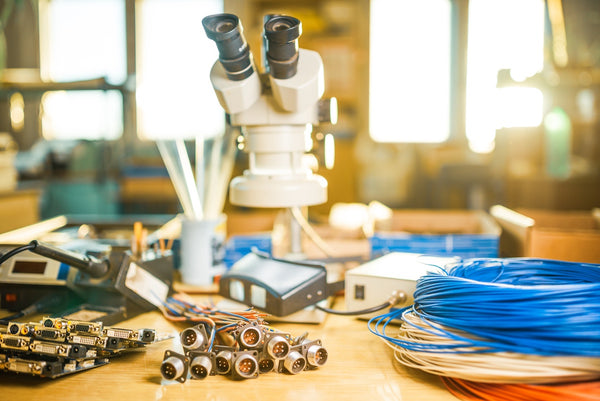
Hey, look at me! The microscopic world
First, we need to talk about what exactly a microscope is. A microscope is a laboratory instrument, that can be used to analyze what we cannot see with just our eyes. Literally microscopic means that the object is invisible to the eye unless we help with a microscope. The first mention of the microscope was by Roman philosophers, although they called it "burning glass", and that was in the 1st century. The first primitive microscope had to wait until the late 1300s. It had two lenses at the other end. of the tube and at the end of the sixteenth century, several Dutch lens manufacturers designed magnifying devices for objects. Interestingly, Galileo Galilei (1564-1642) perfected the device, which we now call a microscope, and which was the first simple microscope as it had two lenses with a single convex objective and an eyepiece.
Some years later, Anton van Leeuwenhoek (1632–1723) began polishing lenses when he realized that polishing in certain ways increased the size of the image. This means that the magnification can be multiplied many times when viewing an object. The quality of the image allowed him to see details of objects such as bacteria, for the first time in history. Can you imagine the excitement of discovering a new world?
Leeuwenhoek's work on tiny lenses led to the construction of the first practical microscope.

However, they look little like today's microscopes; rather, they resembled a very powerful magnifying glass and used only one lens instead of two. Other scientists have not accepted Leeuwenhoek's versions of the microscope because it is difficult to learn to use them. They were tiny (about 2 inches long) and were worn by keeping the eyes close to the small lens and looking at the pattern suspended on the needle. However, with these microscopes, he made microbiological discoveries for which he is famous. Leeuwenhoek was the first to see and describe bacteria (1674), yeast plants, a life filled with water droplets (such as algae), and circulating capillary blood cells. The word "bacteria" didn't exist yet, which is why he called these microscopic living organisms "animalcules." Throughout his long life, he developed studies with his lens on a wide variety of things, living and non-living. He was the first to describe sperm (1677) and assumed that conception occurred when sperm were linked to an egg, although he thought the egg was only used to feed sperm. At the time, there were various theories about the development of babies, so Leeuwenhoek's studies on sperm and ovum from different species sparked outrage in the scientific community. It took scientists about 200 years to agree on the process.
The best-known type of microscope is the optical one or one in which glass is used to shape the image. An optical microscope can be simple and consists of a single lens or a compound that consists of several optical components in a line. An optical microscope provides a magnified lens, but with visible brightness to see the sample up close. It has been traditional since the 18th century and is still used today.

There are many types of optical microscopes. These can range from a very simple design to a high complexity that offers better resolution and contrast. Some types of light microscopes that might interest you are:
Simple microscope: a single lens to magnify the image of a sample.
Compound microscope - a series of lenses to magnify the image of a sample to a higher resolution, most used in modern research.
Digital Microscope: It can have simple or compound lenses but uses a computer to view the image without the need for an eyepiece to view the sample.
Stereoscopic Microscope: Provides a stereoscopic image, which is useful for autopsies.
Comparison Microscope - allows you to view two different samples simultaneously, one eye at a time.
Inverted Microscope - View the sample from below, which is useful for examining liquid cell cultures.
Other types of light microscopes include petrographic, polarization, phase contrast, epifluorescence, and confocal microscopes. I'll tell you about those another time.
Surely like Leeuwenhoek we would spend our time exploring any object or living being if we had a microscope. It is not difficult to immerse ourselves in the wonderful microscopic world. To start you can have a magnifying glass and start observing your fingers, the grass, the insects. From the perspective of a magnifying glass, we are giants and from a microscope even more so. You can have your own microscope and enter this wonderful world of small things.
Suggested Links
Microscope history
https://www.youtube.com/watch?v=HUG6W6dajbY
You could have your own microscope
https://www.velab.com.mx/collections/educacion/products/microscopio-monocular-biologico-basico-ve-m1









































0 Comments